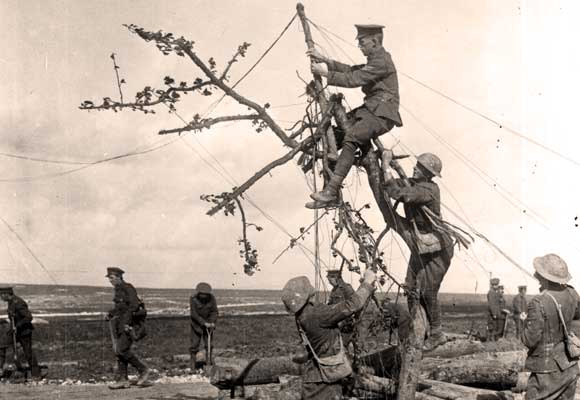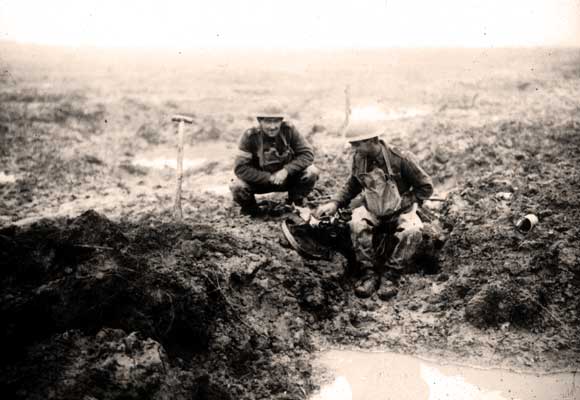Listening Post
Archived Content
Archived information is provided for reference, research or recordkeeping purposes. It is not subject to the Government of Canada Web Standards and has not been altered or updated since it was archived. Please contact us to request a format other than those available.
Listening posts were located far forward of the front line. Typically hidden, they were set up in narrow, shallow trenches or craters in No Man's Land. Soldiers, called sappers, kept a close watch on any enemy activity and gathered information.
Mr. Lindsay describes the equipment used in listening posts.
Transcript
Listening posts, what we used to call listening posts, advance posts that we used to occupy at night only. That used to go about twenty-five yards from the German line almost under their barbed wire and we would sneak in there. We had a kind of a telephone, we had a wire, just a plain wire going to the sentry there and one sentry would stay in the front line, our front line there, and sometime they would pull on that to say that everything was alright. If he was seeing something, suppose he would see a patrol or something that the Germans would do, he would give other signals so that they would come back to the line, so they wouldn't be caught there as prisoners.
Images
- Date modified:

